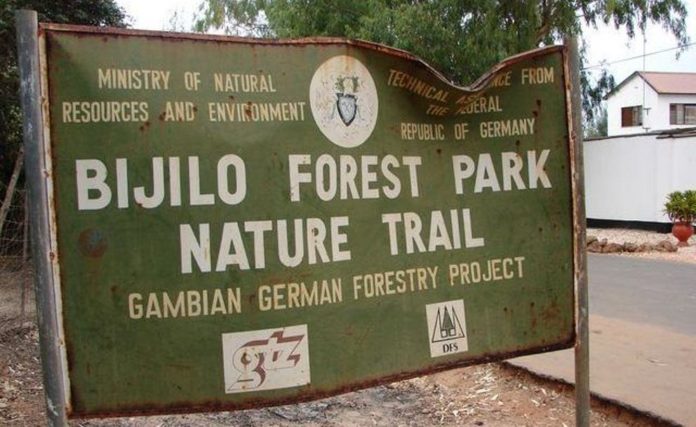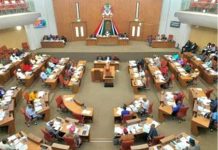By Yankuba Jallow
The National Environment Agency (NEA), has advised Government to reconsider its position of de-reserving the Monkey Park situated in Bijilo.
In a letter sent to the environment group ‘‘Green up Gambia’’ by the Agency and signed by Momodou Jama Suwareh, the Executive Director of the Agency held that “considering the unique and pristine nature of the Bijilo Forest Park and Nature Trail, this Agency advices the Executive to reconsider the decision in de-reserving the Park, for the construction of 5 Star Hotel Resort, Presidential Villas and an Ultra-Modern shopping Mall all in the preparation of the November 2019 OIC Summit of Heads of State.
“De-gazetting this sensitive mosaic habitat for such a development will not only undermine our tourism sector, but will contravene our environmental legislation and obligation as a country, towards the 3 RIO Conventions i.e United Nations Frame Convention on Climate Change, United Nations Convention to Combat Desertification and Convention on Biological Diversity,’’ the NEA letter stated.
According to the letter, under Section 31 (1) of the Biodiversity Act 2003, it is only the Secretary of State responsible for Biodiversity and Wildlife, now the Ministry of Environment, Climate Change and Natural Resources), who has the legal mandate to de-reserve a protected area and not the Ministry of Lands and Regional Government. The letter continued: “The Agency would like to bring to your attention that Bijilo Forest Park and Nature Trail is a highly sensitive and fenced woodland that was Gazetted in 1952, as a protected area. It has an area of 51.3 hectares and is of the three remaining coastal forests along the South Atlantic Coastline of the country, apart from the Kerenti Bird Reserve in Tanji and Bolongfenyo in Gunjur, with all the parks playing crucial roles in erosion control” the NEA letter further stated.
The Agency further said in the letter, that the dunes on the beachfront are intact and coastal erosion is not a major problem in front of the park; but that this has been a serious problem in front of other hotels nearby, which has resulted in the washing away of the buffer zone, which once acted as a barrier to the low lying coastal plain behind the beaches.
“Since its Gazette, Bijilo Park has undergone many management activities. For Instance between 1951 and 1956, the boundaries on both sides of the Park were cleared of fire lines. In 1977 and 1982 respectively, the park was surveyed by the Department of Forestry which was followed by the inventory of the park. A nature trail was created by the Gambia-German Forestry Project in 1991, when the area was made opened for the public and now receives about 23,000 visitors every year,” the NEA letter confirmed.
The Environment Agency stated that it is cognisant with the fact that Bijilo Park has a diverse fauna consisting of threatened and endangered invertebrates, reptiles and mammalian species.
“Bijilo Park is rich in birdlife and offers excellent opportunity for bird watching in the Gambia, where studies have shown that over 133 bird species have been recorded in the park including such interesting species of black-necked weaver, red-billled hornbill, greater honey guide, bearded barbet, oriole warbler, palm-nut vulture and long-tailed nightjar. These and many other species, make the area very attractive to ornithologists to visit the Gambia. Therefore, these species are of national, regional and international importance and cannot be relocated elsewhere in the country since the capacity is not there to do so,” the NEA letter declared.
“We commend the NEA for taking their rightful position free from interference, by telling the truth to the authorities. There are too many miscalculated steps by Government and we all need to be watchdogs before environmental calamity befalls on us,” Mr.Malmo said on behalf of “Green up Gambia.”



















